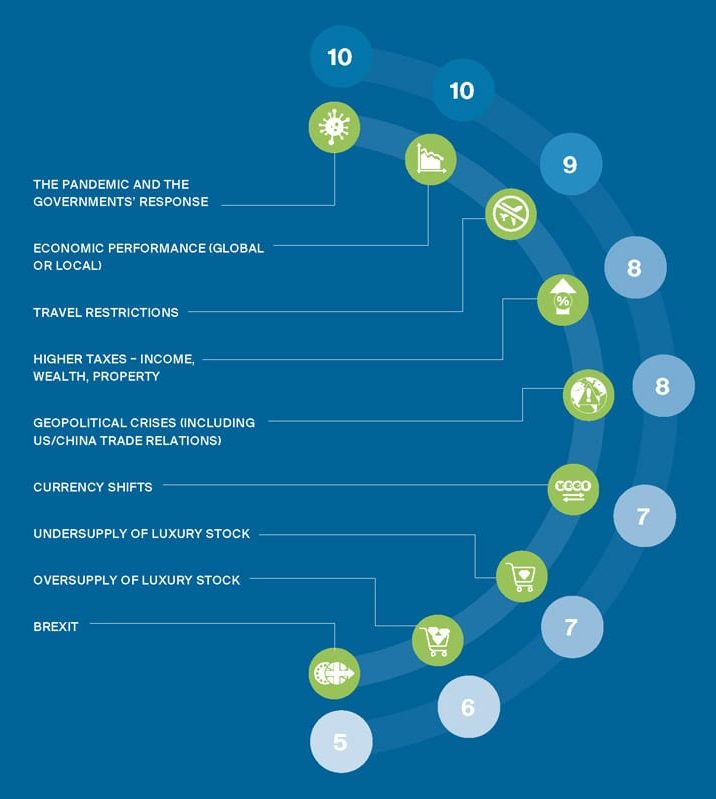Market Economics


The stay-at-home lifestyle drives the global building sector | by Flavia Santia
The Covid-19 pandemic has brought about unprecedented global change in the space of just a few months. The economic crisis and the restrictions adopted by national governments have not only affected businesses all over the world, but have also profoundly altered the lifestyle of citizens, who have changed their habits to the point that new behavioral trends have emerged and are now on the rise. The analysis of these dynamics is fundamental to the study of most business sectors, especially the real estate market which plays a strategic role in defining the economic performance of any country.
One market segment that is particularly worth looking at is the “prime market”, or, more simply, the luxury real estate market. A year ago, before the Covid-19 emergency, the Knight Frank’s Prime Global Cities Index – which monitors price trends within this market – registered average annual growth of 1.1%. In September, this index stood at 1.6%.

The aforementioned index tracks the price performance of prime housing in the world’s most important cities based on data collected by an international team of researchers. A total of 22 cities are taken as a reference for this market: Auckland, Berlin, Buenos Aires, Cape Town, Dubai, Geneva, Hong Kong, Lisbon, London, Los Angeles, Madrid, Melbourne, Miami, Monaco, Mumbai, New York, Paris, Shanghai, Singapore, Sydney, Vancouver and Vienna. Knight Frank’s analysts, within the Prime Global Forecast for 2021, have identified several common factors that are driving growth. The most significant of these is the rise in domestic demand, as the current state of emergency fuels the growth of the so-called stay-at-home economy and families start looking for larger properties. Next comes low interest rates, which are set to turn negative in many more countries. Tax holidays and government incentives are also playing an important role in driving the expansion.
While these drivers have determined the general growth of the prime market at a global level, the recovery has followed different trends in each city.
The economic outlook for 2021 reveals price increases in 20 of the 22 cities examined. Within this general trend, cities can be divided into three large groups based on the type of expected development. The first group identified by Knight Frank consists of markets where the price increases will be driven by very low interest rates, a boom in demand and tax exemptions. These include Sydney, Paris, Berlin, Madrid and New York, where the new Biden administration may lower the high tax rate that characterized the recent period. Another city in this group is London, where the value of prime property is rising steadily as the city continues to be perceived as a safe haven by foreign buyers and remains the most popular choice amongst wealthy individuals in search of larger housing solutions with outdoor spaces.
In the second group we find the cities of Buenos Aires, Shanghai and Lisbon, where the price trend will be unaffected and the market will essentially carry on as in the pre-Covid period. The third group consists of areas that have seen prices rise significantly since 2020, as homeowners had already begun to prefer larger properties with outdoor spaces (Auckland, Vancouver, Geneva, Los Angeles and Miami). Here prices will not increase as rapidly as before but will still maintain a positive trend.

Despite the optimistic forecasts, the current period is characterized by a series of risks and doubts exacerbated by the severe impact of the pandemic. In some countries the lockdown and the continued suspension of business activities have led to a serious economic downturn, in others the high toll in terms of infections and victims has brought entire cities to a standstill, and finally Europe, faced with the second wave, finds itself forced to reintroduce harsh restrictions. This dramatic situation creates a sense of fear and uncertainty among investors, especially foreigners who are particularly affected by current and future travel restrictions.
The chart shows the most significant risks for the development of the global prime market. As can be seen, the pandemic remains in first place together with the potential measures taken by governments in response to the emergency.
While considering the risks, the profound change in the lifestyle of individuals, together with the rapid transition from office life to working from home, has made property the center of our activities and daily lives. This undeniable shift, coupled with the rollout of a vaccine, will further push up the forecasts for 2021 and may usher in a wave of renewed growth. Investors will therefore need to be vigilant and closely monitor the trends that will affect the prime market. The Knight Frank report highlights some of the most important elements to take into consideration.
The introduction of Environmental, Social and Governance criteria, which will be integrated into investments and will provide a large margin of growth for global real estate markets; the concept of “blended city” in which urban centers are repopulated and suburbs become the new hub of services and amenities; second homes, which in response to restrictions will be located closer to primary residences and become cozy, easily accessible retreats; simplification of visa application processes, in order to ease the mobility of international workers and speed up the economic recovery; the behavior of credit institutions, as interest rates turn negative in a growing number of countries but borrowing procedures become more complicated; the fiscal framework and associated uncertainties with regard to future decisions; finally, alternative sectors, such as the hospitality market which offers a wide range of investment opportunities.
December 2020




